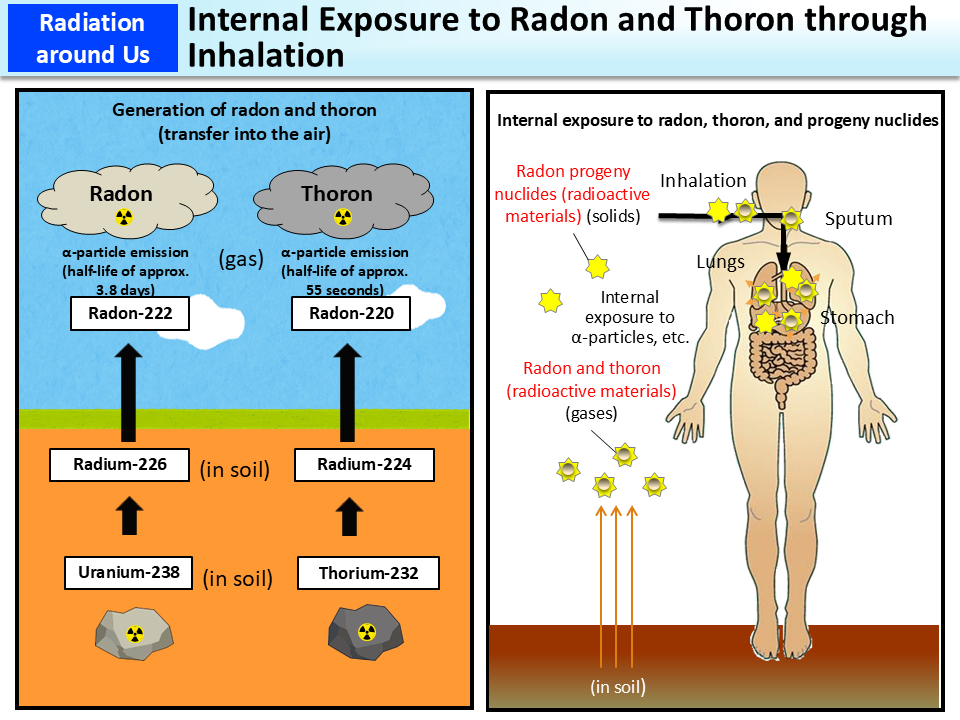Internal Exposure to Radon and Thoron through Inhalation
Radon (Radon-222) and thoron (Radon-220) are gaseous radioactive materials produced through radioactive decay of a radium ore. They enter the human body through inhalation. Radon results from decay of Radium-226 produced in a decay chain (uranium series) that starts from uranium, and thoron results from decay of Radium-224 produced in a decay chain (thorium series) that starts from Thorium-232. Radon has a half-life of approx. 3.8 days and thoron has a half-life of approx. 55 seconds.
Radon and its progeny nuclides are the largest contributors of natural radiation exposure.
Because radon and thoron diffuse into the air from the ground, building materials, etc. (p.72 of Vol. 1, “Generation of Radon Gas from Solid Radium”), people inhale radon and thoron in their lives on a daily basis. Inhaled radon reaches the lungs and emits α (alpha)-particles, causing internal exposure of the lungs. Radon inhaled into the body further decays into progeny nuclides, which then migrate from the lungs and the esophagus to the digestive organs together with sputum, causing further internal exposure.
Radon contributes less to internal exposure than its progeny nuclides. This is because radon, being a gas, is easily exhaled, while radon daughter nuclides, i.e., radioactive Polonium-218 and Lead-214 that is created through decay of the former, are solids and therefore not easily expelled out of the body once inhaled as they adhere to the alveoli and the bronchial wall surface.
- Included in this reference material on March 31, 2015
- Updated on March 31, 2021

